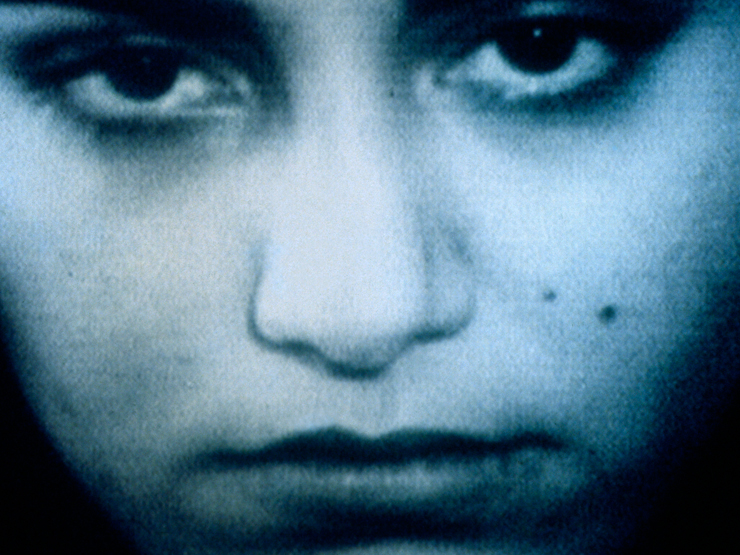
Rima Tannous Eissa, Palestinian hijacker, Tel-Aviv Prison, May 1972
| Mind Terrorist Alvin Lu May 1998 |
What is the difference between novelists and film directors? Directors like conspiracy theories with nexuses of political power pulling the strings of a large and complex cast. Novelists go for the lone gunman theory. The lone gunman plots in his dingy, unfurnished room, trapped in chaos, cut off from history. His is a myopic, shameful life. In Don DeLillo's novels, at the centre of the vast religious mystery of the reclusive novelist/assassin is a guy in his room cutting his toenails with scissors, sneezing snot on his manuscript. But with a single miraculous shot, he's propelled into the body politic. The act of writing/shooting/bombing occupies the central paradox of democracy, the irreconcilable tension between the individual and the mass culture.
"Isn't it the novelist, above all people, above all writers, who understands this rage, who knows in his soul what the terrorist thinks and feels? Through history it's the novelist who has felt affinity for the violent man who lives in the dark... It's the novelist who understands the secret life, the rage that underlies all obscurity and neglect." Or is the relationship between novelists and terrorists one of "playing a zero-sum game", where "what the terrorists gain, novelists lose"?1
dial H-I-S-T-O-R-Y samples DeLillo's riffs from White Noise and Mao II and plays them out in the arena of mass media.2 Editing together broadcast news of Cold War-era hijackings, surreal found footage and personal video, this work pits meaning and imagery against one another in an elliptical dialectic. The work's shadow is therefore cast much further and wider than a singular history of airplane hijackings. Reading between the lines, space is left for the viewer to complete the experience by giving an innate sense to the mind-blowing imagery colliding before their very eyes. The fabric of everyday life is turned inside out and becomes lethal: private resentment, revolutionary movements and pop-culture banality clash and mix, hitting a nerve of quiet discomfort deep within. Revolutions have been televised and commodified before, but perhaps television's dark underbelly does hold potential to point the way towards our only valid revolution, one where we take a long and hard look at ourselves.
Few films explore the complex, troubled relationship between commodification and violent death. While recent films and art seem increasingly removed from relevance, dial H-I-S-T-O-R-Y moves into the dangerous but vital territory that's been home to artists who are willing to fight. This is the fertile region that the avant garde should thrive in. Has dial H-I-S-T-O-R-Y's widespread dissemination inspired future generations of dying breeds: novelists and terrorists? Digital media finally presents the possibility of an alternative kind of filmmaker, the promise of a different kind of film. Here, at least, is the illusion and fantasy of the lone editor in a dank video editing room, taking the mind-controlling stuff of mass media and spinning it back. Like the novelist, the lone editor is not in the business of building political coalitions or working with real people, but is instead blurring the boundary between thought and action.
Because dial H-I-S-T-O-R-Y speaks in the mass media's own language of sound and image, a kind of liberating energy galvanizes it, lending hope that art has not been rendered obsolete. Meanwhile, the novel now broods and plots underground, perhaps where it belongs. "The writer belongs at the far margin, doing dangerous things. In Central America, writers carry guns. They have to... The state should want to kill all writers. Every government, every group that holds power or aspires to power should feel so threatened by writers that they hunt them down, everywhere."3 Writers, welcome home.
Adapted from: Lu, A., "Mind Terrorist", in The San Francisco Bay Guardian (6 May 1998).